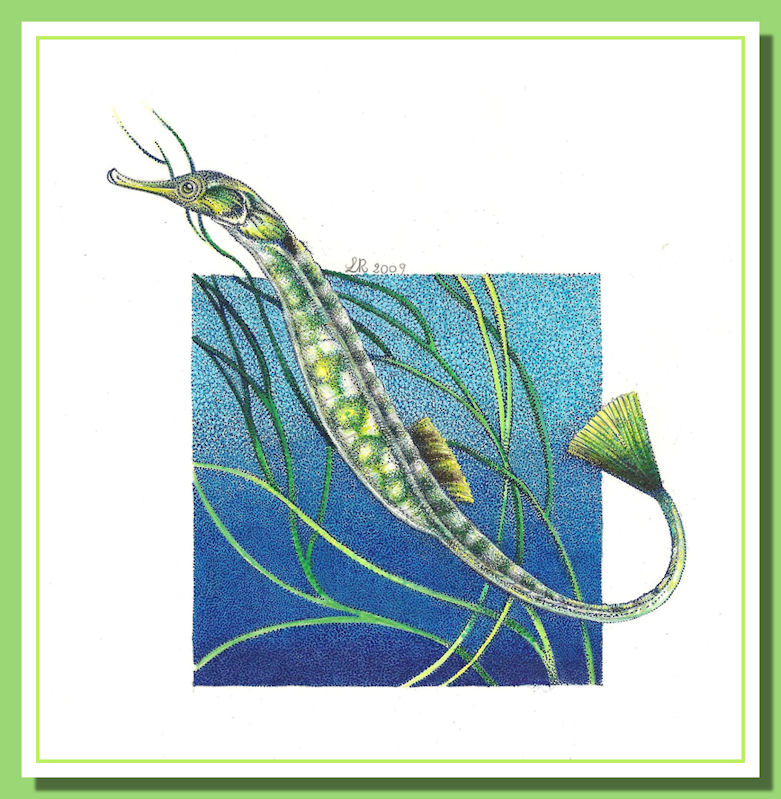Fishing in the Abruzzo Mountains
by Diana Fattori
PaleoArt by Loana Riboli
The pipefish Syngnatus sp. - Paleoart by Loana Riboli © 2009
Italy is world-famous for its old history. Everyone knows the artistic treasures from Rome, Florence, or Venice, but despite these renowned cities, people traveling around the country can easily notice that every small village preserves its artistic patrimony from a very distant time.
Last summer I visited the small village of Palena in Abruzzo, a central Italian region. While walking along a narrow alley, I spotted a marble plate explaining that many years ago the Como family departed from here to emigrate to the United States. Their son, the singer Perry Como, was the first-generation American of the family.
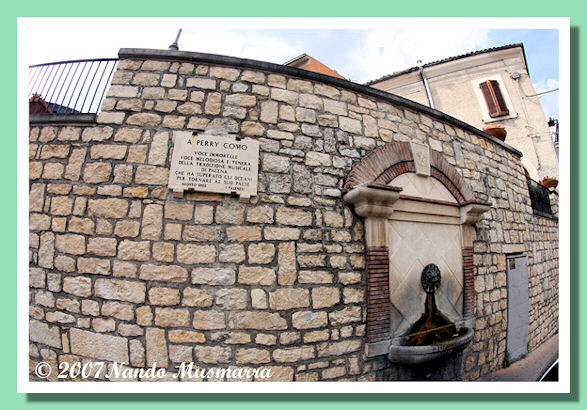
Perry Como commemorative plate
Reaching the main square, my eyes encountered the beautiful local medieval castle. Many centuries ago, this old building housed aristocratic families, princes and dukes that used to live in fortified castles to protect themselves and their domains from the enemies. Also the di Sangro family, to which belonged the sinister character of Prince Raimondo, teacher of the alchemist Duke of Cagliostro, lived in this building.
At the present time, the aristocrats and magicians are gone, and the Palena castle houses in a brand-new paleontological museum a much older treasure: millions-of-years-old fossils found on Mount Maiella.
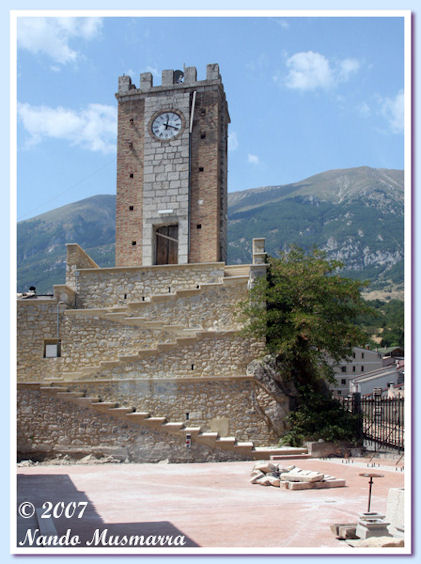
The museum curator is an old friend of mine. His name is Erminio Di Carlo; he is a long-time amateur paleontologist. Thanks to him, the scientific community has had the opportunity to understand a lot more about the never-before-studied local fossil fauna. The Italian paleontological heritage was studied in depth during the "Grand Tour" from the XVII to XVIII centuries, when foreigners and Italian scientists wrote a lot of papers, and Italy, like nowadays, was continuously visited for cultural and artistic purposes. Sadly, the Abruzzo area was always kept off these tours, maybe because there was no university there, or because at that time the region was the very far-removed suburb of the Realm of Naples.
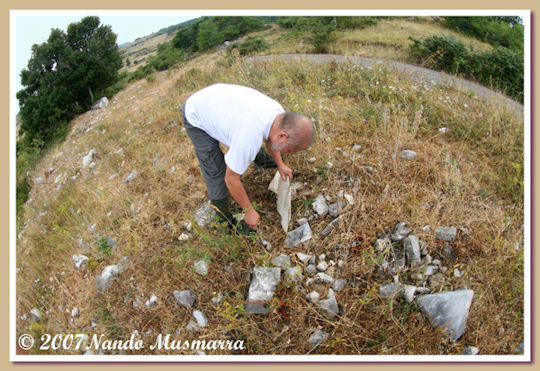
Erminio Di Carlo
After many years, this scientific gap was filled by Erminio Di Carlo. He has looked for fossils on his Mount Maiella for more than 20 years, putting together an incredible Miocene marine vertebrate collection. It is important to notice that since 1939 in Italy it has been illegal to collect fossils as well as archeological remains. Because of his skill and loyalty, Erminio was the first amateur paleontologist to receive permission to legally collect Italian fossils.
Pliny the Elder, the Roman scientist who died in Pompeii during the Vesuvius eruption in 79 A.D., wrote in his Natural History Encyclopedia that Mount Maiella is the mother of all mountains. Pliny actually got it; Mount Maiella has a very old geologic history. Maiella and the surrounding mountains started during the Mesozoic 200 million years ago, when a slow and continuous accumulation of sediments for more than 135 million years built up several thousand meters' deposit along the Tethys shore. Corals and rudists in fossilized form are testimony to those ancient rocks.
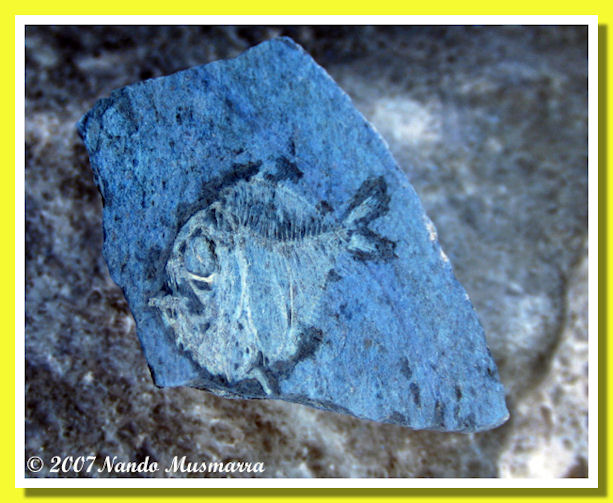
A very small (1 inch) nice Discosteron federicae from Torricella Peligna - Graphic by Nando Musmarra
During the Cenozoic, the land emerged and the sedimentation stopped in some places, while in some others there were transgressions and regressions of the sea. During the Lower Miocene, 23 million years ago, new sediments were brought in by the rising of the sea. Fossil fish remains tell us about a deep sea habitat along a shore where various plants and land vertebrates lived.
Finally, 5 million years ago, there was the definitive uplift of the mountain from the sea.
Since Mount Maiella was created from sediments settling to the bottom of the sea, fossil fishes can be expected to play a predominant role. Fishes are a successful diverse group in every water habitat, and hold an important place in evolutionary history. They are the first known vertebrates and the starting point for all terrestrial tetrapods.
The Palena museum exhibits fossil fishes from several Maiella locations. Every specimen was found by Erminio Di Carlo.
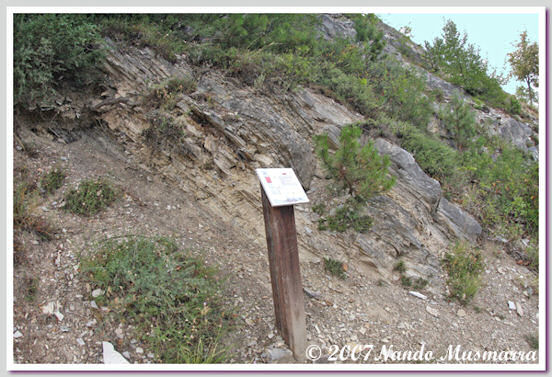
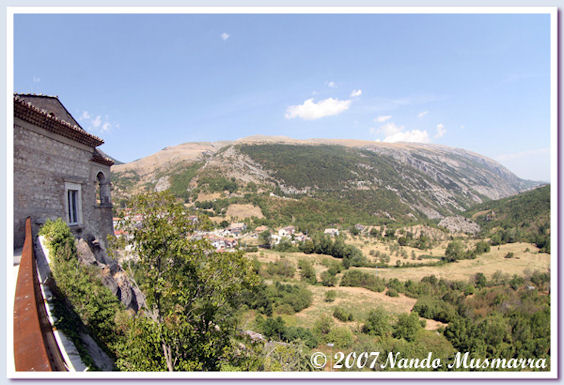
Sign along Capo di Fiume fossil site - Panorama
A very large collection comes from the Lettomanoppello area (Lower Miocene, Burdigalian), and most of the fossils are shark remains. I was totally hooked by a big Carcharodon subauriculatus, the mako sharks Cosmopolitodus (Isurus) hastalis and Isurus oxyrhyncus, and rare Parotodus benedeni fossil teeth.
Bony fishes are also very well-represented, including barracuda and porcupine fish remains. There are also crocodile remains, mostly teeth, belonging to Tonistoma, a species related to the living croc from Southeast Asia.
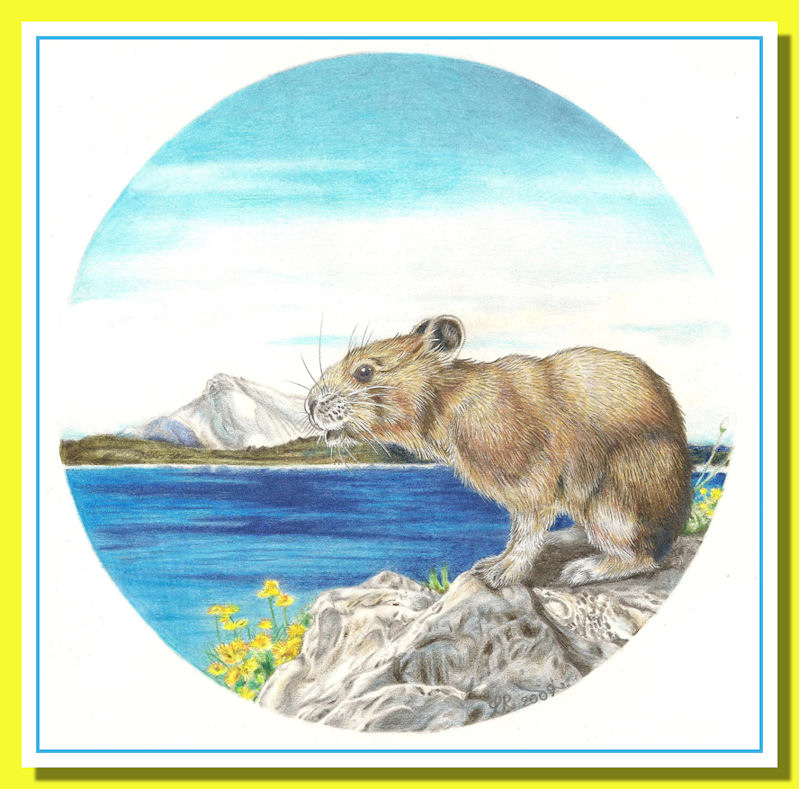
Prolagus - Paleoart by Loana Riboli © 2009
More cases show fossils found in the Capo di Fiume springs area (Upper Miocene, Messinian). Here visitors can enjoy many different fossil plants and complete fishes, as well as one of the museum stars, the Prolagus sp., an extinct rabbit relative with the fur impression still preserved. The bone positions of the poor paleo-bunny tells us that it died by drowning about 7 million years ago.
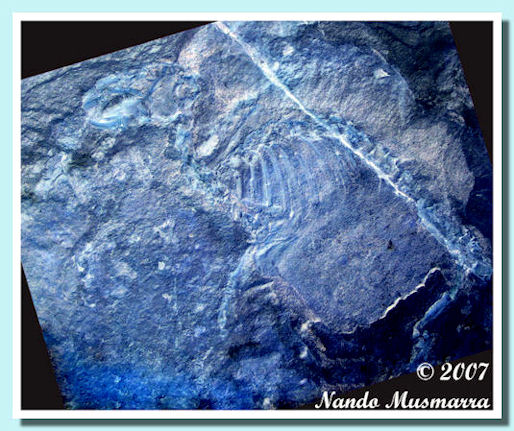
Prolagus specimen from Capo di Fiume fossil site - Graphic by Nando Musmarra
Some of the very best discoveries made by Erminio di Carlo come from the villages of Gessopalena and Torricella Peligna. Fossil fishes from these two localities date back to the Serravallian stage of the Middle Miocene. These scarce fishes belong to species coming from the deep abyss; it is very rare to find them in fossilized forms. Some of them have been found here for the first time in the paleontological record. Especially nice are the Abruzzo-ichthys erminioi, a stomid fish named after Abruzzo region and Erminio; the Fanteichthys torricellensis, named after John Fante, the American writer whose ancestors came from Torricella Peligna; and the moonfish Ranzania zappai, named after the rock star Frank Zappa.
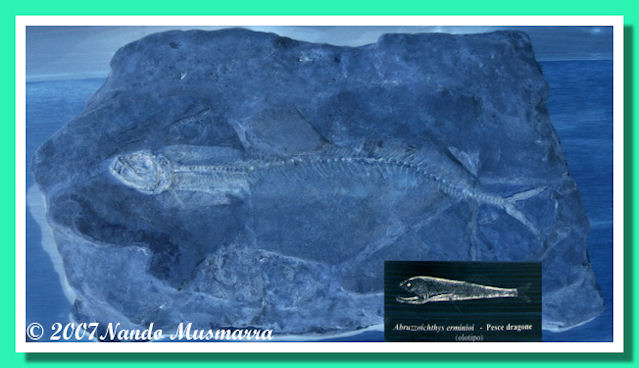
Holotype of the dragon fish Abruzzoichthys erminioi - Graphic by Nando Musmarra
All Maiella fossil sites are open year-round for visiting and there is no admission charge. Summer is the best season to go, when the snow (if any) is gone, and you can eventually include a trip to the nice Abruzzo coast, where the beaches are clean and not too crowded. Some of my favorite spots in the area are Francavilla al Mare and Montesilvano, where it is also possible to observe Pliocene shells in the local clay quarries.
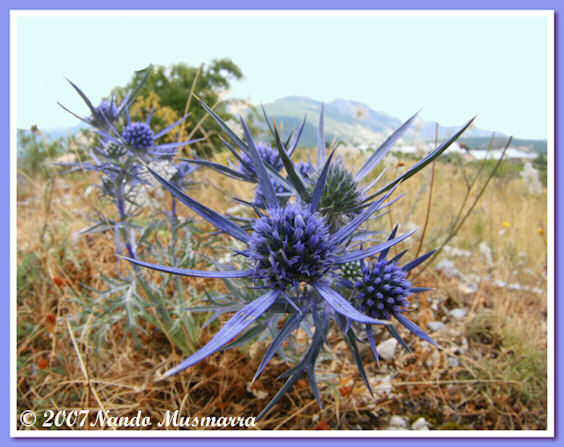
Endemic flora from mount Maiella. The Eryngium amethystium is a sea holly cultivar that is noted for the steel coloration in the flowers, steam and foliage
Diana Fattori © 2008-2009
Editor's note:
This page is dedicated to the beloved memory of Erminio Di Carlo
